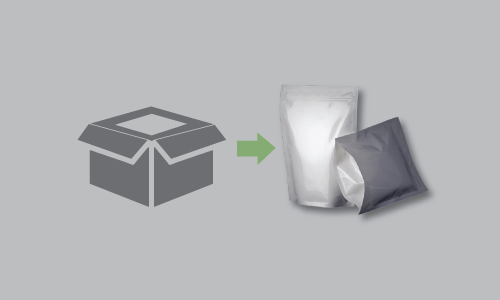From coffee to cosmetics, medication to meals, detergent to dry goods, flexible packaging is on the rise globally. With over 61% growth from 2000 through 2017 in the US alone, consumers are asking for it and manufacturers are using pouches, blister packs, foil, and more to store, ship, and sell products, according to Packaging World.
Where is the Demand for Flexible Packaging on the Rise?
In their most recent Flexible Packaging Assessment report, Packaging World and PMMI Business Intelligence found a variety of reasons this market continues to grow:
- USA (Est. Market Size by 2023: $44 Billion, CAGR: 3.9%): An early adopter and an already mature market, consumers expect packaging to become more consumer and environmentally friendly, while retailers are pushing toward shelf-ready stand-up pouches.
- Mexico (Est. Market Size by 2023: $4 Billion, CAGR: 12.6%): As a growing consumer market, demand for flexible packaging in Mexico comes as consumers demand longer shelf life and convenience.
- Asia (Est. Market Size by 2023: $49 Billion, CAGR: 6%): With a growing middle class and an aging population, the rapid growth is attributed to an expansion in the food industry, and consumers who want visually appealing packages, smaller size, affordability, and convenience.
- Europe (Est. Market Size by 2023: $41 Billion, CAGR: 7.8%): An already mature market with environmentally conscious consumers, many in the industry see Europe as an innovation hub for flexible packaging. According to the report, “manufacturers believe that Europe is more advanced and diverse in flexible packaging compared to other markets due to its robust systems and the region’s ability to introduce innovative concepts in its flexible packaging, such as unique plastic bowl styles and custom shapes and designs.”
Factors Pushing Flexible Packaging Further
Retailer and Ecommerce Demands
Flexible Packaging has long been celebrated for its sustainability, but it’s not just consumers who want easy storage, handling, and transport, it’s retailers and ecommerce providers.
According to the Flexible Packaging Association, one truckload of unfilled flexible pouches could carry the same amount of product as 26 truckloads of unfilled glass jars, making flexible packaging not only environmentally friendly, but logistically friendly as well.
Whether it’s Amazon looking to decrease their shipping and storage costs or Wal-Mart pushing for shelf-ready stand up pouches, manufacturers will be expected to rethink their packaging to accommodate these demands if they want shelf space.
Expectations for Resealable and Long-Lasting Products
As mentioned above, growing demand for flexible packaging in Mexico is driven by increasing demand for improved shelf life. However, this is by no means a new or local phenomenon. As we discussed in an earlier blog on the sustainability of flexible packaging, reduction in food waste was a driver of its use in the US, with this packaging method greatly increasing shelf life of products:
In fact, according to the Flexible Packaging Association, many consumers would be willing to pay more if they find the product offers easy storage, resealibility, and environmentally friendly packaging.
Flexible Packaging Makes Products More Visually Appealing
Considered a way to provide a unique buying experience, flexible packaging’s luster in the fast-growing Asian market is driven by its ability to provide a canvas of sorts.
According to FlexPack, 81% of consumers said they “always,” “often” or “sometimes” notice when a product appears in new or different packaging. In the same survey, 39% of consumers said they “always,” “often” or “sometimes” buy a product specifically because of new or different packaging.
Not without Challenges: Environmental Concerns in Flexible Packaging
Even if flexible packaging provides an environmentally sustainable shipping experience, extends food life, and makes recycling easy, the production and printing processes create Volatile Organic Compounds, or VOCs, that need to be controlled efficiently and affordably.
Flexible packaging would be much more challenging without flexographic printing, and in order to provide the visual appeal that consumers around the world expect, manufacturers often need to select inks that can set on materials like plastic, film, foil, and other nonabsorbent substrates.
At the CMM Group, we have worked with companies both in the printing and packaging industries throughout our existence and know how to design, manufacture, and deliver a solution to minimize VOCs and other forms of air pollution.
We have worked with local, regional, and global players to design pollution control systems that can operate at or above required destruction efficiencies and deliver more efficiency, reliability and affordability than many alternatives.
Our demonstrated success with companies in the flexible packaging and printing industry includes many satisfied clients, some of whom you can see on our case studies page.
Ready to learn more? We invite you to download our free VOC Abatement Guide and contact us for more information.




